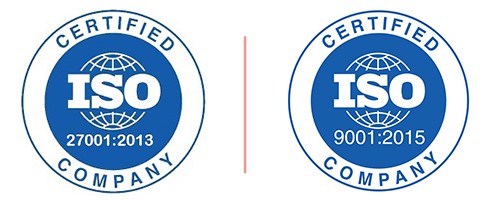- +81-5050505761
- [email protected]
The global paints and coatings market size was US$ 168.3 billion in 2021. The global paints and coatings market size is forecast to reach US$ 317.3 billion by 2030, growing at a compound annual growth rate (CAGR) of 7.3% during the forecast period from 2022 to 2030.
Paints and coatings are protective covers applied to objects to protect them from the sun, corrosion, oxidation, abrasion and extend their life. Their glossy appearance serves decorative and functional purposes. Painting and coating the walls, metal components, and equipment give them a decorative appearance. The raw materials used to produce paints and coatings include resin, pigments, curing agents, dispersants, additives, and solvents. The type of resin used to prepare paints and coatings can distinguish them from one another.
Factors Influencing Market Growth
Impact Analysis of COVID-19
The COVID-19 pandemic had negatively impacted the growth of the global paints and coatings market. The outbreak of COVID-19 has adversely affected the export-oriented economies of countries as manufacturing plants have closed. Construction has been severely affected by social distancing, self-isolation, and city-wide lockdowns, which have forced many sites to stop work. These factors have all impacted the overall consumption of paints & coatings across all countries.
Regional Insights
In 2021, Asia Pacific dominated the market and accounted for the majority of global revenue. Construction activities in emerging countries, including China, India, Japan, and Southeast Asia, are likely to drive market growth over the forecast period. Low labor costs in the emerging nations of Asia Pacific have attracted many foreign investors to set up manufacturing facilities there. Therefore, manufacturing facilities are fueling construction in the region, which, in turn, is forecast to boost the demand for paints and coatings over the forecast period.
Leading Competitors
The leading prominent companies profiled in the global paints and coatings market are:
Scope of the Report
The global paints and coatings market segmentation focus on Product, Material, Application, and Region.
Segmentation based on Product
Segmentation based on Material
Segmentation based on Application
Segmentation based on Region
[TABLE OF CONTENTS]
1 INTRODUCTION OF GLOBAL TOUCH SENSOR MARKET
1.1 OVERVIEW OF THE MARKET
1.2 SCOPE OF REPORT
1.3 ASSUMPTIONS
2 EXECUTIVE SUMMARY
3 RESEARCH METHODOLOGY
3.1 DATA MINING
3.2 VALIDATION
3.3 PRIMARY INTERVIEWS
3.4 LIST OF DATA SOURCES
4 GLOBAL TOUCH SENSOR MARKET OUTLOOK
4.1 OVERVIEW
4.2 MARKET DYNAMICS
4.2.1 DRIVERS
4.2.2 RESTRAINTS
4.2.3 OPPORTUNITIES
4.3 PORTERS FIVE FORCE MODEL
4.4 VALUE CHAIN ANALYSIS
5 GLOBAL TOUCH SENSOR MARKET, BY PRODUCT
5.1 OVERVIEW
5.2 WATERBORNE COATINGS
5.3 SOLVENT-BORNE COATINGS
5.4 POWDER COATINGS
5.5 HIGH SOLIDS/RADIATION CURING
5.6 OTHERS (SPECIALTY COATINGS)
6 GLOBAL TOUCH SENSOR MARKET, BY MATERIAL
6.1 OVERVIEW
6.2 ACRYLIC
6.3 POLYESTER
6.4 ALKYD
6.5 POLYURETHANE
6.6 EPOXY
7 GLOBAL TOUCH SENSOR MARKET, BY APPLICATION
7.1 OVERVIEW
7.2 ARCHITECTURAL & DECORATIVE
7.3 NON-ARCHITECTURAL
7.3.1 AUTOMOTIVE & TRANSPORTATION
7.3.2 WOOD
7.3.3 GENERAL INDUSTRIAL
7.3.4 MARINE
7.3.5 PROTECTIVE
8 GLOBAL TOUCH SENSOR MARKET, BY GEOGRAPHY
8.1 OVERVIEW
8.2 NORTH AMERICA
8.2.1 NORTH AMERICA MARKET SNAPSHOT
8.2.2 U.S.
8.2.3 CANADA
8.2.4 MEXICO
8.3 EUROPE
8.3.1 EUROPE MARKET SNAPSHOT
8.3.2 WESTERN EUROPE
8.3.2.1 THE UK
8.3.2.2 GERMANY
8.3.2.3 FRANCE
8.3.2.4 ITALY
8.3.2.5 SPAIN
8.3.2.6 REST OF WESTERN EUROPE
8.3.3 EASTERN EUROPE
8.3.3. 1 POLAND
8.3.3.2 RUSSIA
8.3.3.3 REST OF EASTERN EUROPE
8.4 ASIA PACIFIC
8.4.1 ASIA PACIFIC MARKET SNAPSHOT
8.4.2 CHINA
8.4.3 JAPAN
8.4.4 INDIA
8.4.5 AUSTRALIA & NEW ZEALAND
8.4.6 ASEAN
8.4.7 REST OF ASIA PACIFIC
8.5 MIDDLE EAST & AFRICA
8.5.1 MIDDLE EAST & AFRICA MARKET SNAPSHOT
8.5.2 UAE
8.5.3 SAUDI ARABIA
8.5.4 SOUTH AFRICA
8.5.5 REST OF MEA
8.6 SOUTH AMERICA
8.6.1 SOUTH AMERICA MARKET SNAPSHOT
8.6.2 BRAZIL
8.6.3 ARGENTINA
8.6.4 REST OF SOUTH AMERICA
9 GLOBAL TOUCH SENSOR MARKET COMPETITIVE LANDSCAPE
9.1 OVERVIEW
9.2 COMPANY MARKET RANKING
9.3 KEY DEVELOPMENT STRATEGIES
10 COMPANY PROFILES
10.1 THE SHERWIN WILLIAMS COMPANY
10.1.1 OVERVIEW
10.1.2 FINANCIAL PERFORMANCE
10.1.3 PRODUCT OUTLOOK
10.1.4 KEY DEVELOPMENTS
10.2 AKZO NOBEL N.V.
10.2.1 OVERVIEW
10.2.2 FINANCIAL PERFORMANCE
10.2.3 PRODUCT OUTLOOK
10.2.4 KEY DEVELOPMENTS
10.3 AXALTA COATING SYSTEMS, LLC
10.3.1 OVERVIEW
10.3.2 FINANCIAL PERFORMANCE
10.3.3 PRODUCT OUTLOOK
10.3.4 KEY DEVELOPMENTS
10.4 PPG INDUSTRIES, INC.
10.4.1 OVERVIEW
10.4.2 FINANCIAL PERFORMANCE
10.4.3 PRODUCT OUTLOOK
10.4.4 KEY DEVELOPMENTS
10.5 RPM INTERNATIONAL, INC.
10.5.1 OVERVIEW
10.5.2 FINANCIAL PERFORMANCE
10.5.3 PRODUCT OUTLOOK
10.5.4 KEY DEVELOPMENTS
10.6 BASF SE
10.6.1 OVERVIEW
10.6.2 FINANCIAL PERFORMANCE
10.6.3 PRODUCT OUTLOOK
10.6.4 KEY DEVELOPMENTS
10.7 HENKEL AG & COMPANY, KGAA
10.7.1 OVERVIEW
10.7.2 FINANCIAL PERFORMANCE
10.7.3 PRODUCT OUTLOOK
10.7.4 KEY DEVELOPMENTS
01
お客様のニーズに合わせてレポートをカスタマイズ可能
02
ベテランの市場調査員による専門的な分析
03
安全で簡単に利用できるオンライン決済方法
04
お客様のご要望に応じて、特定の章を購入することができます。
05
すべてのレポートに専門的な日本語翻訳を提供
06
包括的でわかりやすいレポートを迅速にお届けします。
07
購入後も継続的なサポートとアップデートが受けられます。

We Accept

Copyright ©2022 All rights reserved